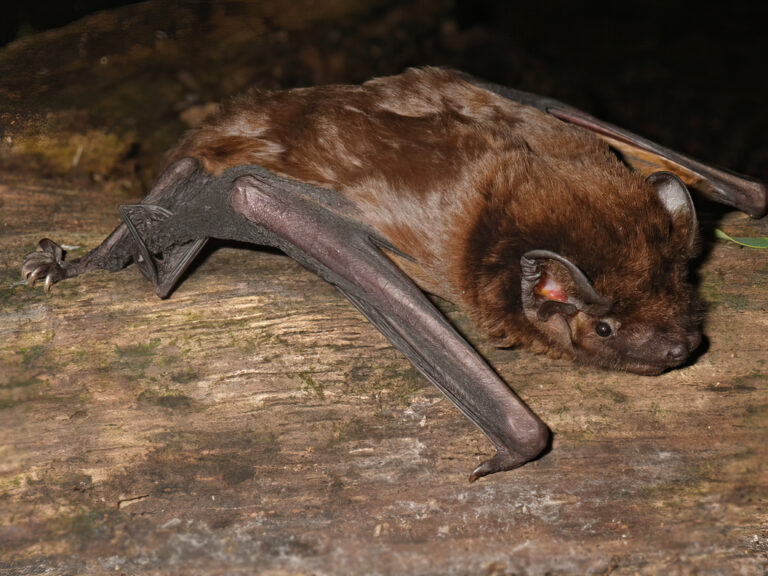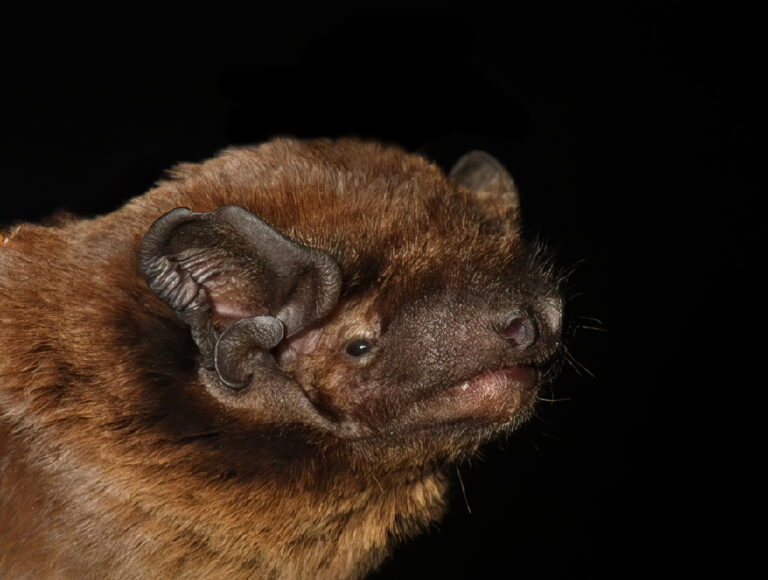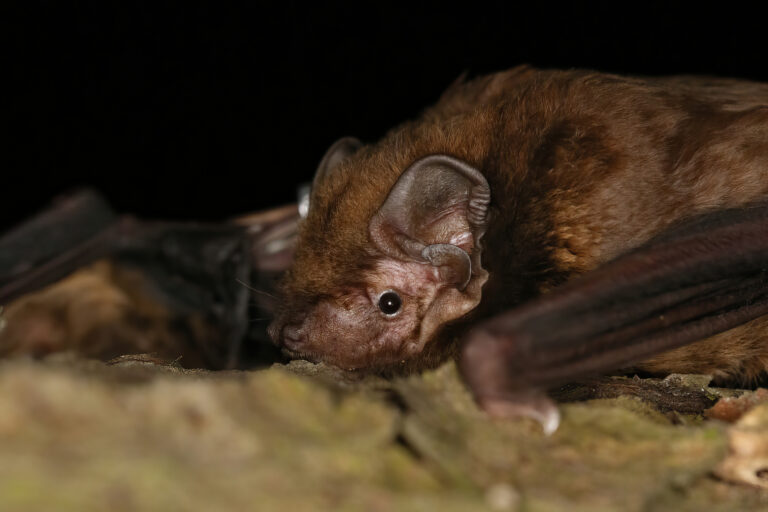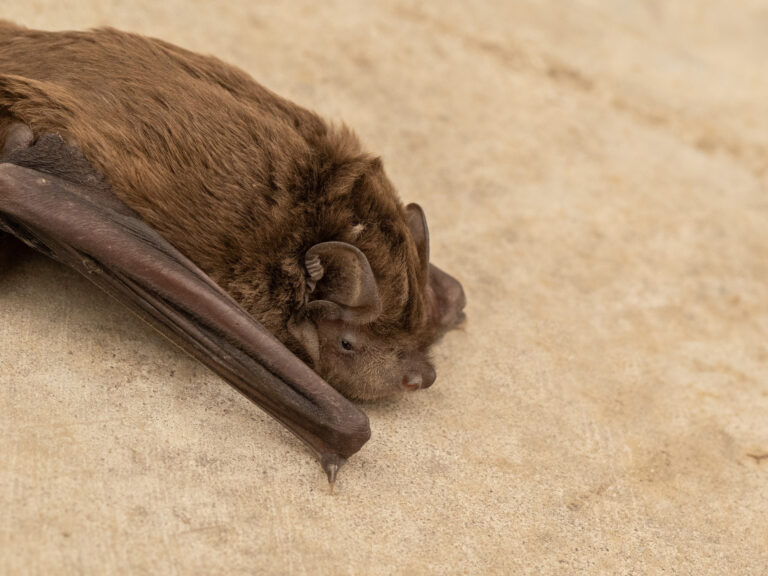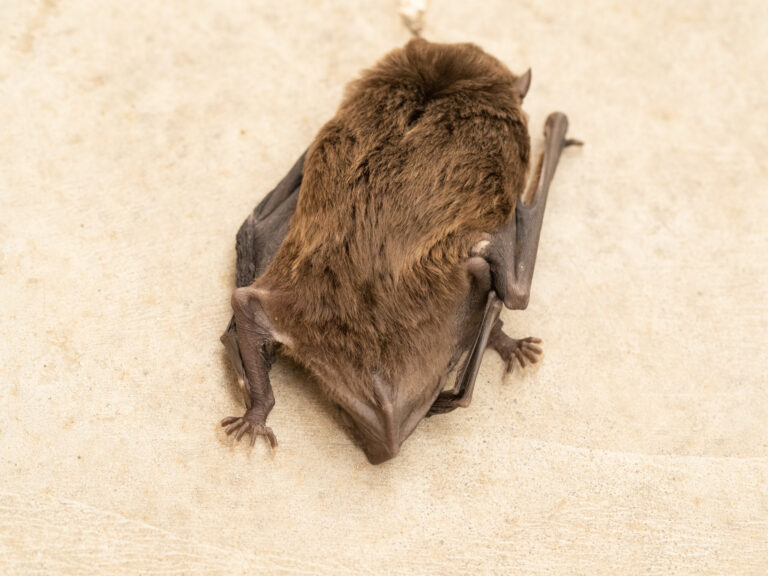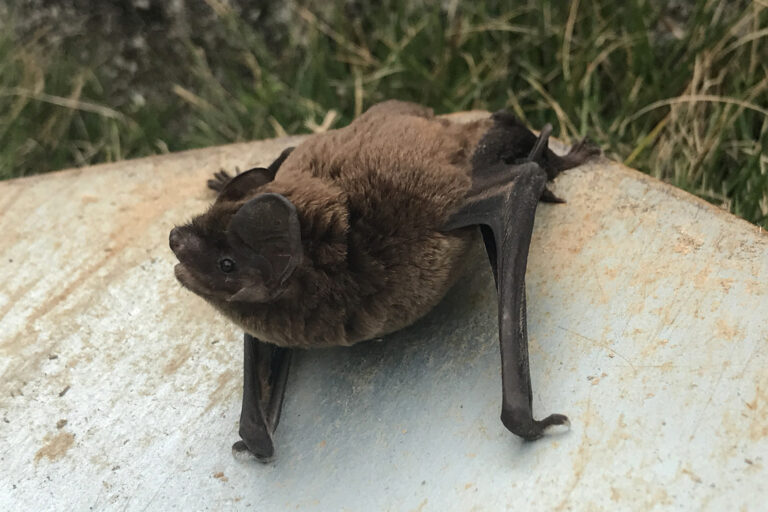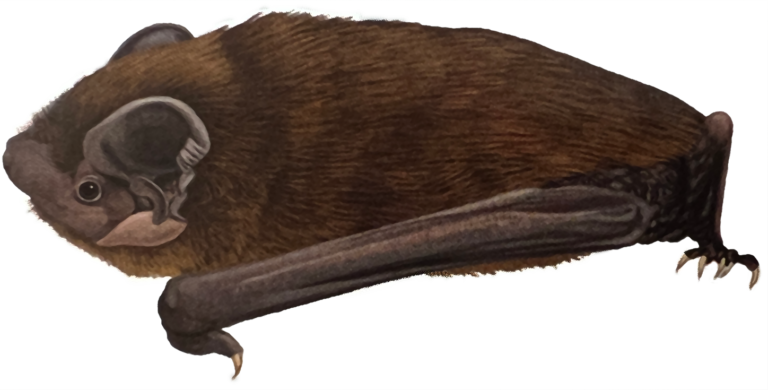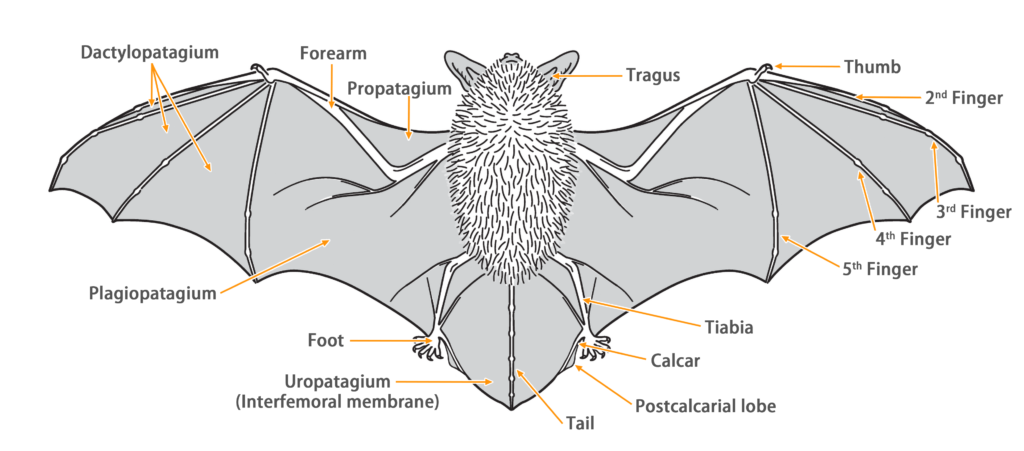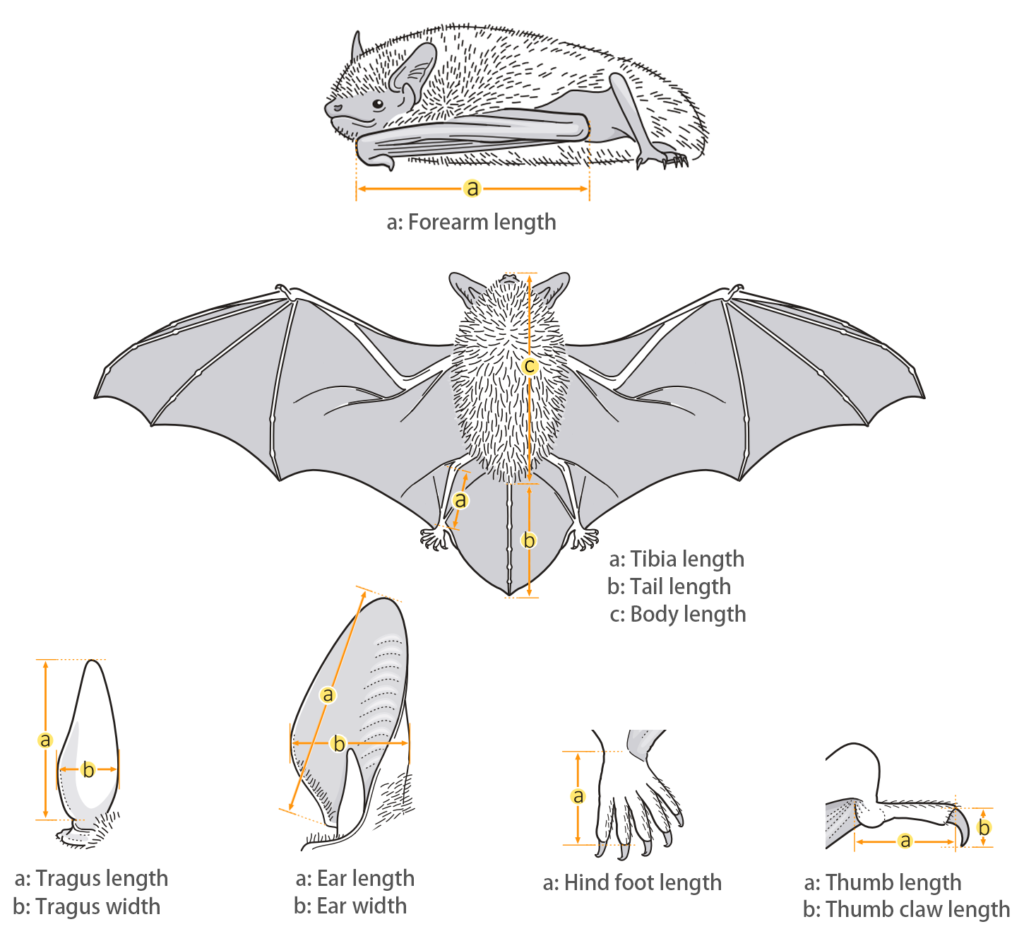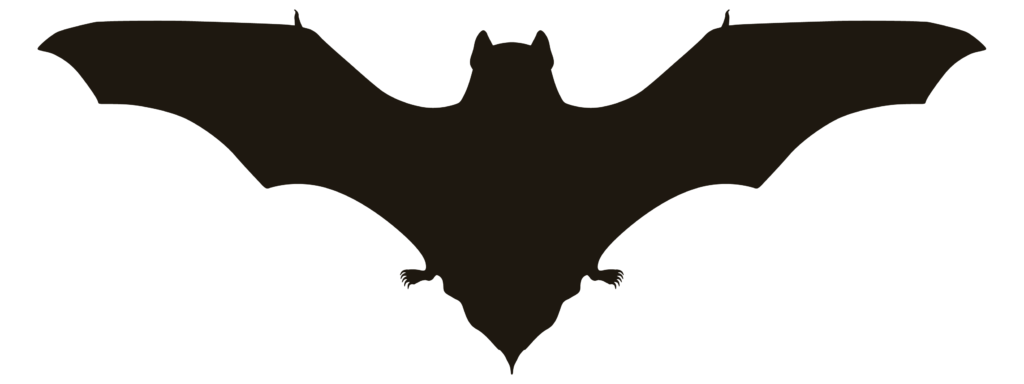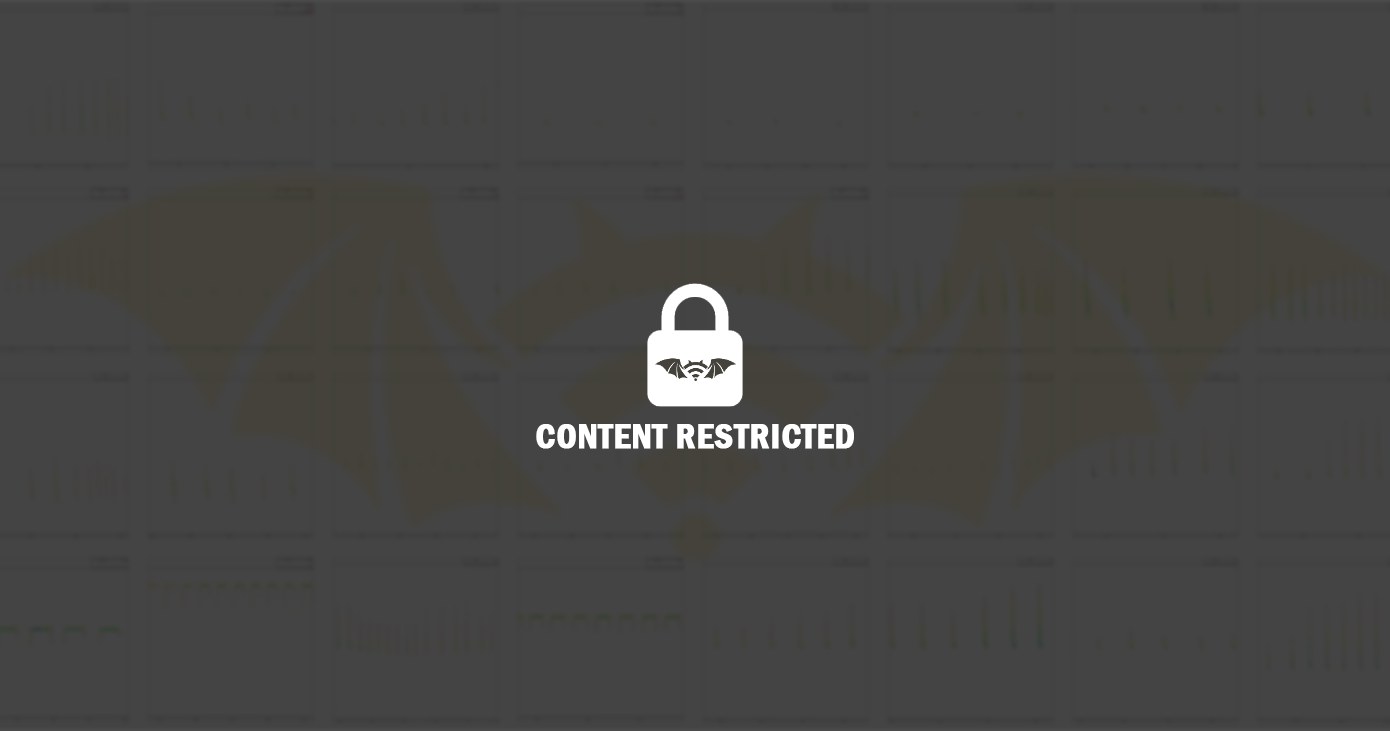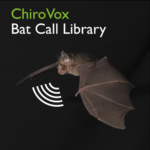- Hong Kong Bat Radar
- Chinese Noctule (Nyctalus plancyi)
Chinese Noctule
Nyctalus plancyi (Gerbe, 1880)
Taxonomy
| Family: | Vespertilionidae |
| Genus: | Nyctalus |
| Scientific name: | Nyctalus plancyi (Gerbe, 1880) |
| Synonyms: | - |
| Common name: | Chinese Noctule |
| Other name: | Mountain Noctule |
| Remark: | N. plancyi was initially considered a subspecies of N. noctula but was later elevated to the status of an independent species. It includes three known subspecies: N. p. plancyi Gerbe, 1880, N. p. labiatus Hodgson, 1835, and N. p. velutinus G.M. Allen, 1923. Based on geographical distribution, the Chinese Noctule in Hong Kong belongs to the subspecies N. p. velutinus. |
| Characteristics | |
| Color: | The pelage is long and glossy. Both the dorsal and ventral fur are dark brown or brownish-brown in color (with darker bases), while the ventral fur is slightly lighter. The fur extends partially into the wing membrane, with dense fur extending from the abdomen to the anterior part of the elbow and posterior part of the humerus, and sparse fur extending transversely from the elbow to the base of the fingers. |
| Ear: | The ear pinna is short, wide and blunt triangular in shape. The ear tip is rounded and smooth, and the posterior edge extends to the corner of mouth. The tragus is short and broad, with a horizontally kidney-shaped apex. Both the ear and tragus are dark brown in color. |
| Head: | The muzzle and face are deep brown in color. The snout is relatively short, and the sides of the snout are noticeably swollen with glands that can secrete a brownish liquid when under pressure. |
| Limbs: | The wing membrane attaches to the ankle. |
| Tail: | The tail is long and competely enveloped by the interfemoral membrane, with the tip of the tail (1.25 mm) slightly protruding beyond the interfemoral membrane. The calcar is well-developed with postcalcarial lobe. |
| Other: | The male bat has a large and pendulous penis. |
| Body measurements | |
| Size: | Medium noctule |
| Body: | 65.0 - 87.0 mm |
| Tail: | 36.0 - 59.0 mm |
| Ears: | 15.0 - 18.0 mm |
| Hind foot: | 10.0 - 14.0 mm |
| Forearm: | 47.0 - 50.0 mm |
| Weight: | 19.0 - 29.1 g |
| Wing morphology | |
| Wing span: | 0.358 m |
| Wing area: | 0.017 m2 |
| Wing loading: | 14.8 ± 1.55 N/m2 (High) |
| Aspect ratio: | 7.76 ± 0.79 (High) |
| Tip-shape index: | 1.25 ± 0.26 (Low) |
| Reference: | Liu et al., 2015 |
Ecology
| Habitat: | The species exhibits both urban and suburban habitat preferences, favoring man-made structures such as temples, utility poles, ceilings, beams, tile gaps, and wall crevices. In natural environments, they typically roost in caves, hollow trees, and rock crevices. |
| Habit: | Colony size varies depending on the size of the roosting site and availability of resources, ranging from a few individuals to several hundred. In one recorded instance at a former building of West China Normal University, the colony consisted of approximately 600 individuals. They can coexist with other bat species in East Asia. |
| Hibernation: | There is no specific research on the local population, but individuals have been observed engaging in flight activity during autumn and winter. In a colony in Chengdu, individuals enter hibernation approximately from late December to February, with the actual duration varying depending on temperature. When temperatures range from 11-20 ℃, some individuals begin entering hibernation, while at temperatures below 8 ℃, the majority of individuals are already in hibernation. A small portion of individuals in short hibernation periods may awaken at night to forage before returning to hibernation. |
| Diet: | The species is insectivorous, feeding on small to medium-sized insects such as mosquitoes, moths, and flying ants. Based on its relatively lower frequency echolocation calls, it is inferred that the prey items consumed by this species are larger in size compared to other local pipistrelle. |
| Home range: | During the spring season, the maximum home range size reaches 33.5 km2, with an average of 15.5 km2. In the summer season, the maximum home range expands to 94.8 km2, with an average of 34.6 km2. |
| Reproduction: | The ovulation period is approximately from March to April. The gestation period lasts 20-30 days, with parturition occurring in early to mid May. They typically give birth to 1-2 pups per litter, with twins being common. The lactation period spans 30 days. |
| Migration: | The species possesses excellent long-distance flight capabilities. During the winter season, some individuals may migrate from their original roosting sites to suitable hibernation locations. However, there are no recorded instances of migration in the local population. |
| Flight: | The species exhibits high flight speeds but low maneuverability. They possess excellent flight efficiency and hovering capabilities, making them well-suited for long-distance flights. They can cover distances of several tens of kilometers, with variations depending on the season (spring: 15.6 km, summer: 24.7 km). They typically fly at high altitudes, around 60 meters above the ground, and also engage in foraging flights around high-intensity light sources, such as sports fields and stadiums. |
| Foraging: | The species is crepuscular, exhibiting two peaks of activity during twilight and before dawn (19:00-21:00 in the evening and 03:00-05:00 in the early morning), with resting periods in between. The timing of leaving the roost, returning to the roost, and activity is seasonally influenced, varying based on factors such as sunlight duration, weather conditions, temperature, food availability, and reproduction. For instance, in summer, the bats tend to leave the roost earlier in the evening compared to spring and autumn. The time of emergence in the evening is later on cloudy days compared to sunny days. Fine drizzles have minimal impact, with only a few individuals venturing out during light rain, while heavy rain restricts their activity. The bats typically emerge slightly later in the evening compared to Japanese Pipistrelle, and they return to the roost earlier before sunrise. |
Distribution
| Local: | The New Territory, Hong Kong Island, Lantau Island and Mobile Island |
| Global: | |
| N. p. plancyi : | Northeast & East Central China (Gansu, Shaanxi, Shanxi, Henan, Beijing, Shandong, Liaoning, and Jilin). |
| N. p. labiatus : | Himalayas from North Pakistan, North India, Nepal, South Central China, and North Myanmar a long with Northwest & South Vietnam; may occur in Thailand, North Laos, Northeast Vietnam, and Peninsular Malaysia, but there are no confirmed records from these regions. |
| N. p. velutinus : | Central & Southeast China (Sichuan, Yunnan, Hubei, Anhui, Jiangsu, Shanghai, Zhejiang, Guizhou, Guangxi, Hunan, Jiangxi, Fujian, Guangdong, and Hong Kong) and Taiwan. (Moratelli et al., 2019) |
Local distribution map
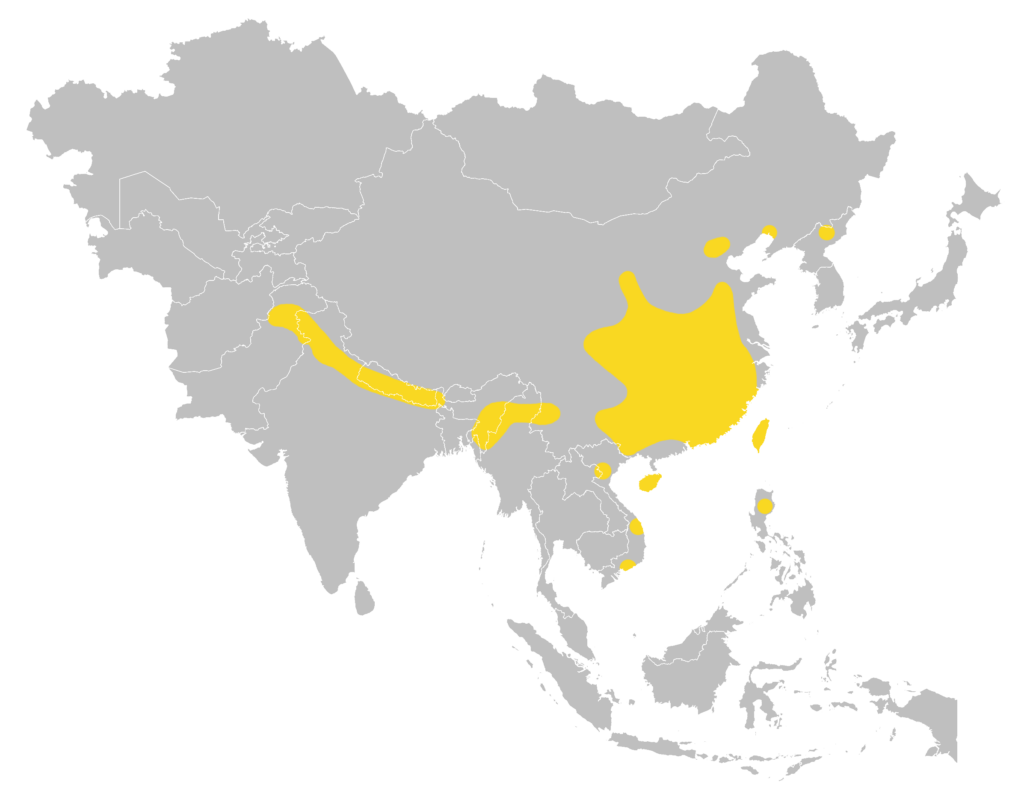
Global distribution map
(Moratelli et al., 2019)
Status and Conservation
| First record: | 1870 |
| Origin: | Native |
| Local status: | Uncommon (Shek & Chan, 2005) |
| National status: | Least concern (Red List of China Vertebrates) |
| Global status: | Least concern (IUCN Red List) |
| Potential threat: | TBC |
Echolocation
| Parameter | Value |
|---|---|
| Call structure | FM / QCF |
| Duration | 1.30 ± 1.90 ms |
| Inter pulse interval | 39.80 ± 40.10 ms |
| Peak frequency | 33.50 ± 0.50 kHz |
| Highest frequency | - kHz |
| Lowest frequency | - kHz |
|
Subspecies: |
N. p. velutinus |
|
Region: |
China (Hainan Island) |
| Method: | N/A |
| Reference: | Zhu et al., 2008 |
| Parameter | Value |
|---|---|
| Call structure | - |
| Duration | - ms |
| Inter pulse interval | - ms |
| Peak frequency | - khz |
| Highest frequency | 79.40 ± 9.20 kHz |
| Lowest frequency | 24.90 ± 2.00 kHz |
|
Subspecies: |
N. p. velutinus |
|
Region: |
China (Hubei) |
| Method: | Flight tent |
| Reference: | Müller et al., 2006 |
Bibliography
Cheng, H. C., Fang, Y. P., & Chou, C. H . (2022). A Photographic Guide to the Bats of Taiwan (4th ed.). Endemic Species Research Institute.
Liu, H., Shi, H. Y., Liu, H. L., Tang, Z. H., & Wang, J. (2015). Development of wing morphology in the Chinese noctule (Nyctalus plancyi). Acta Theriologica Sinica, 35(3), 271-279.
Liu, S. Y., Wu, Y., & Li, S. (2022). Handbook of the mammals of China (3rd ed.). The Straits Publishing & Distribution Group.
Moratelli, R., Burgin, C., Cláudio, V., Novaes, R., López-Baucells, A., & Haslauer, R. (2019). Vespertilionidae. In Mittermeier, R. A., & Wilson, D. E. (Eds.), Handbook of the Mammals of the World – Volume 9 Bats. (pp. 716-981). Lynx Edicions.
Müller, R., Lu, H., Zhang, S., & Peremans, H. (2006). A helical biosonar scanning pattern in the Chinese Noctule, Nyctalus plancyi. The Journal of the Acoustical Society of America, 119(6), 4083-4092.
Shek, C. T. (2006). A field guide to the terrestrial mammals of Hong Kong. Friends of country park and cosmos book limited.
Shek, C. T., & Chan, C. S. M. (2006). Mist Net Survey of Bats with Three New Bat Species Records for Hong Kong. Hong Kong Biodiversity, 11: 1-7.
Thong, V. D., Denzinger, A., Sang, N. V., Huyen, N. T. T., Thanh, H. T., Loi, D. N., Nha, P. V., Viet, N. V., Tien, P. D., Tuanmu, M. -N., Huang, J. C. -C., Thongphachanh, L., Luong, N. T., & Schnitzler, H.U. (2021). Bat Diversity in Cat Ba Biosphere Reserve, Northeastern Vietnam, A Review with New Records from Mangrove Ecosystem. Diversity 2021, 13(8), 376.
Tong, C. P. (2016). Distribution and preference of landscape features and foraging sites of insectivorous bats in Hong Kong urban parks. [Master’s thesis, The University of Hong Kong].
Zhu, G. J., Han, N. J., Hong, T. Y., Min, T. A. N., Yu, D., & Zhag , L. B. (2008). Echolocation Call, Roost and ND1 Sequence Analysis of New Record of Nyctalus plancyi (Chiroptera: Vespertilionidae) on Hainan Island. Zoological Zoological Research, 29(4), 447-451.
嚴雪、孟仁丹、張丹、翁家琴 、劉琪利、姜帆娟、石紅艷(2015)。中華山蝠冬眠期間生理特性及生態習性。綿陽師範學院學報,34 (8),80-87。(In Chinese only)
石紅艷、吳毅、胡錦矗、李艷紅(2006)。中華山蝠繁殖生態的研究。獸類學報,21 (3),210。(In Chinese only)
石紅艷、吳毅、胡錦矗(2003)。中華山蝠的晝夜活動節律與光照等環境因子的關係。動物學雜誌,38 (5),25-30。(In Chinese only)
石紅艷、劉昊、嚴雪、孟仁丹、李海艷、唐中海、賈小東、遊章強(2017)。GPS跟踪技術在中華山蝠家域及覓食活動研究中的應用。第十三屆全國野生動物生態與資源保護學術研討會暨第六屆中國西部動物學學術研討會論文摘要集。(In Chinese only)
Hong Kong Bat Radar. (18/05/2025). A Field Guide to Bats of Hong Kong: Chinese Noctule (Nyctalus plancyi ). https://hkbatradar.com/en/nyctalus_plancyi
